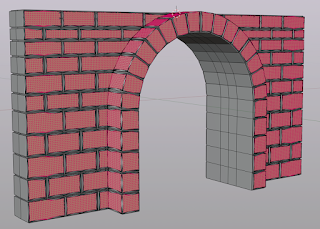Introduction
I often use Blender to model railway scenery in H0 scale for 3D printing. While Blender is not a CAD program, it proves to be a very useful tool in cases where artistic considerations are just as important as exact tolerances.
Problem with Tunnel Portals
Recently, I was working on some tunnel portals and wanted to create a rough surface on certain faces. Using fuzzing settings in a slicer did not yield the results I was looking for, so I decided to use a displacement modifier with Musgrave noise to achieve this effect.
Vertex Groups and Subdivision Modifier
By defining a vertex group, the displacement modifier can be restricted to just the faces that need the rough texture. However, there must be enough geometry to see any details.The subdivision modifier, however, cannot be restricted with a vertex group. It also suffers from the same drawbacks as manual subdivision: all faces are subdivided uniformly, meaning the new faces will be proportional to the size of the original faces. Larger faces result in larger new faces, and smaller faces result in smaller new faces. Additionally, n-gons are often not subdivided properly, as shown in the next image, where the rectangular bricks each have six edges.
MicroTile Add-on
What I wanted was a way to create a dense grid of uniformly sized faces on any selected face, and this is exactly what the MicroTile add-on does.

Simply select any faces you want to subdivide, then choose Add → Tile selected faces. The default setting creates faces with sides of 1 cm, but the Size option can be adjusted to any value. In the image above, the large stones are approximately 2 x 4 cm and were subdivided into 1 mm tiles.
Availability
The add-on is available for download from my Github repository.
Click the Download raw file button (near the upper right corner), then install the downloaded file via Preferences → Add-ons → Install from disk. Once installed, a new menu item will appear in Edit mode: Add → Tile selected faces.



No comments:
Post a Comment